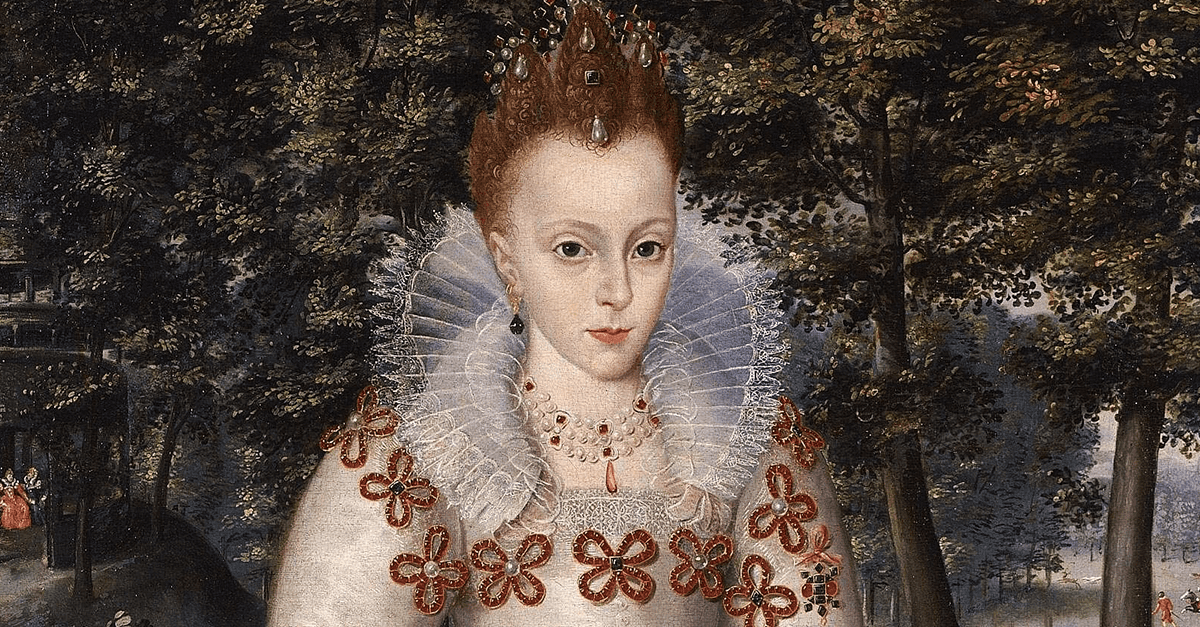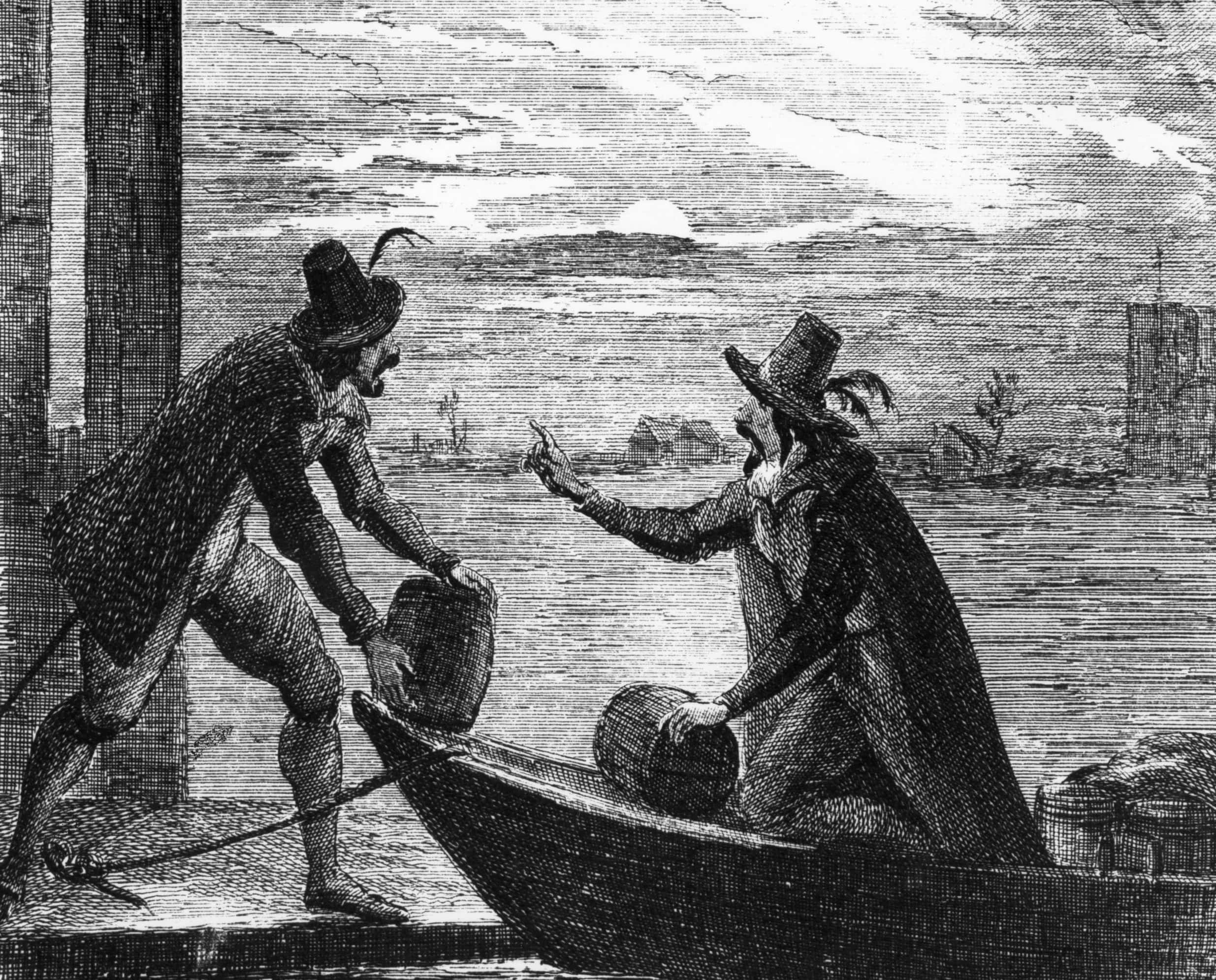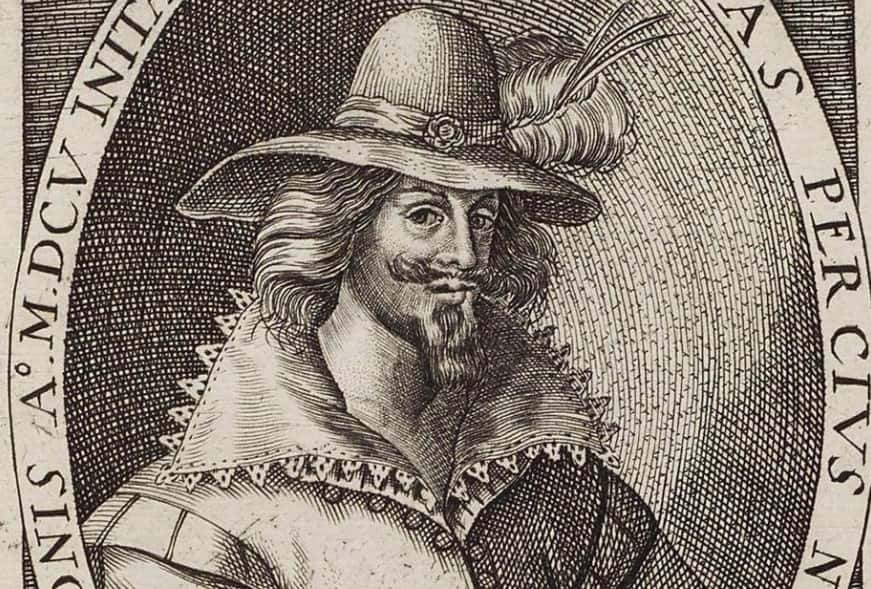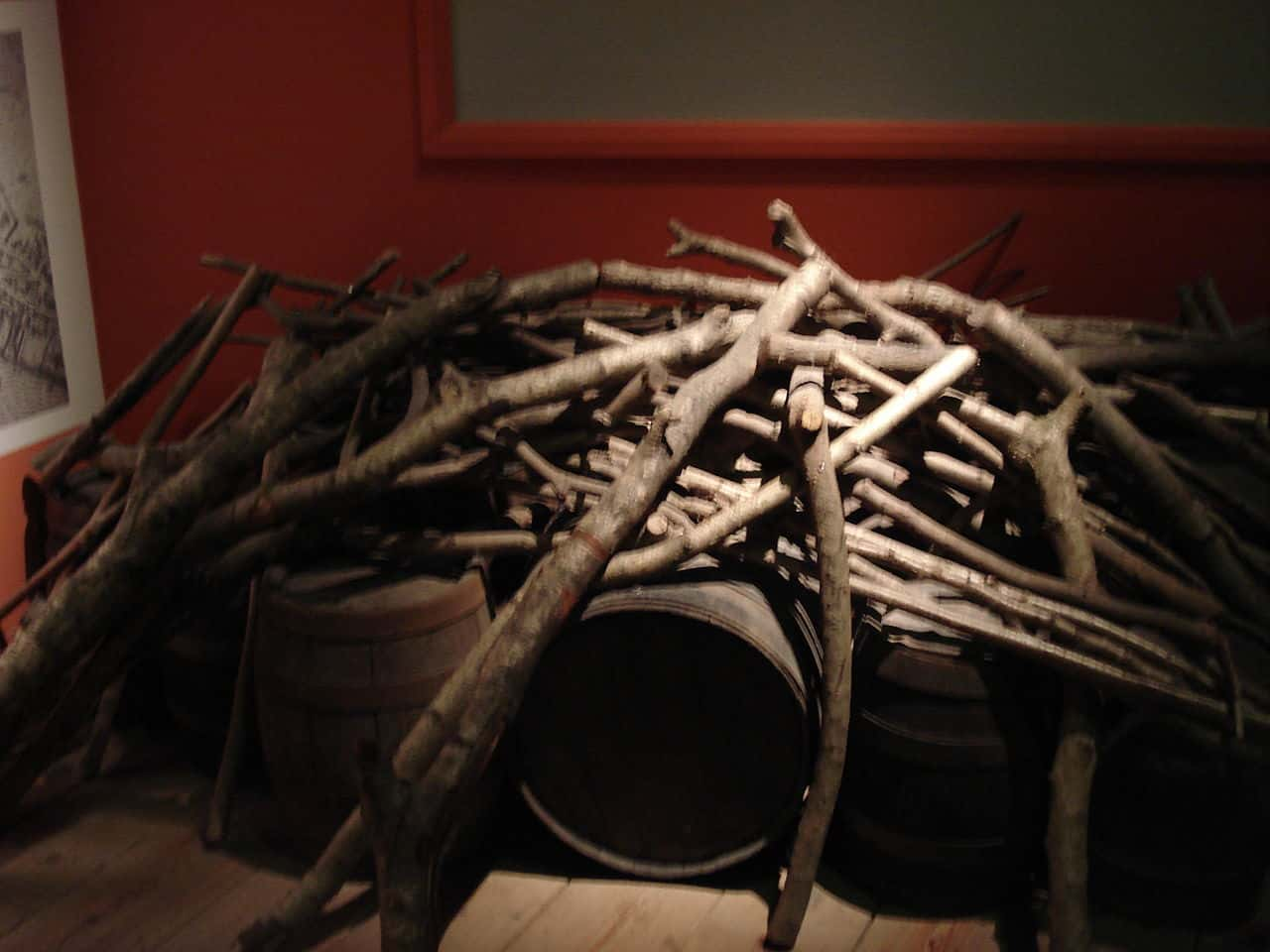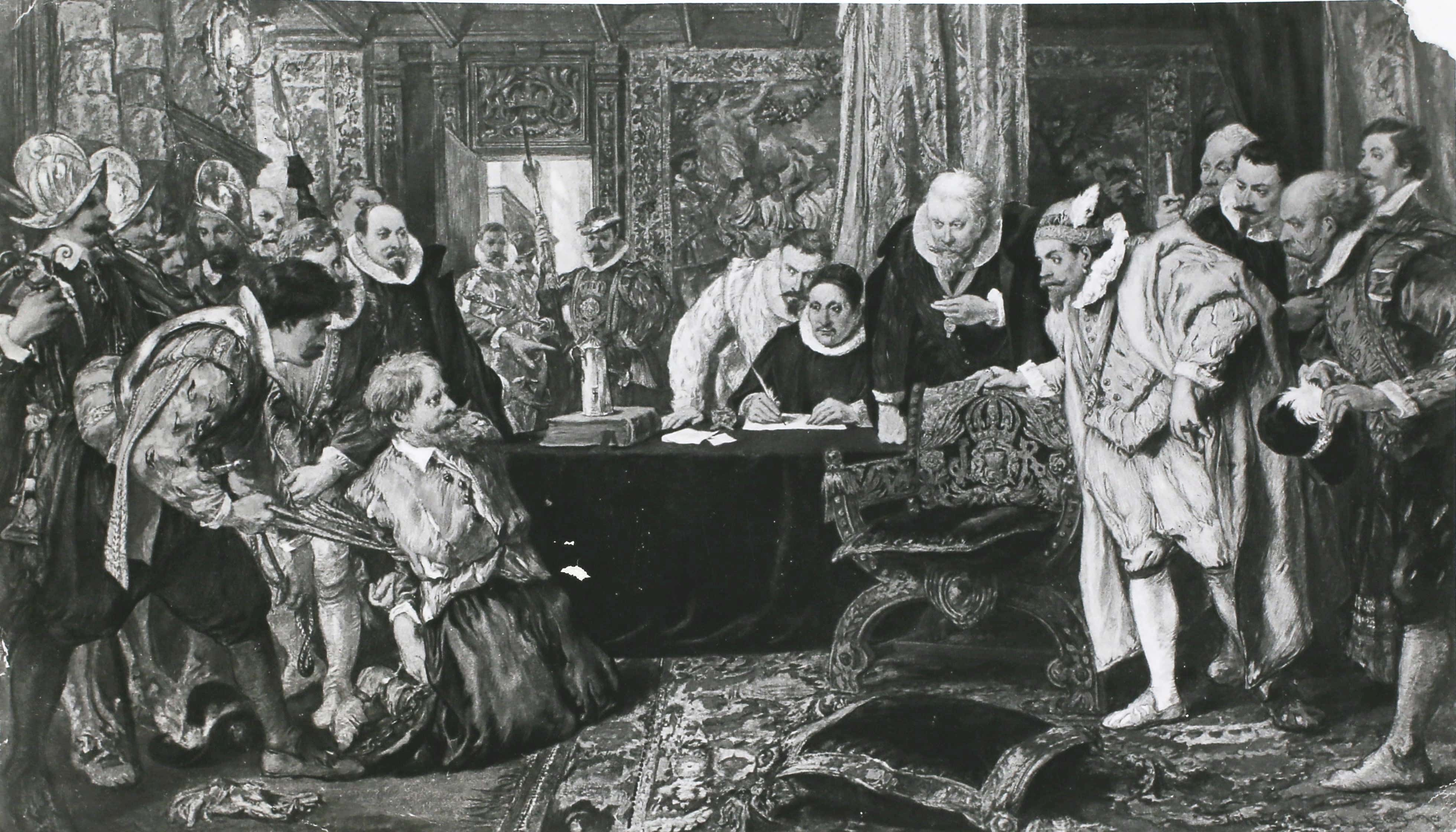"Remember, remember, the 5th of November
The Gunpowder Treason and plot;
I know of no reason why Gunpowder Treason
Should ever be forgot".
The Gunpowder Plot of November 5, 1605 was an unsuccessful attempt to detonate an explosion aimed at King James I of England, including the entire British Parliament. Robert Catesby, Guy Fawkes and 11 other conspirators planned the action with the aim of replacing the country's staunchly Protestant Government with a Catholic one, thus ending the persecution of Roman Catholics by the English Government.
The event has been noted ever since with Guy Fawkes Night, each November 5th, that is celebrated, mostly in Great Britain, for extremely different reasons depending on who you ask. With works like Alan Moore's V for Vendetta and the unmistakable Guy Fawkes masks worn by young self-styled anarchists, the events of the Gunpowder Plot are very much still reverberating in the world today, even if all that powder was never actually lit. Read on for 42 explosive facts about this historic moment in British history.
42. Busted
Sometime around midnight on the night of November 4th, 1605, Guy Fawkes, arguably the most famous of the co-conspirators for this exact reason, was discovered hiding in a cellar under the House of Lords in the Palace of Westminster. When the premises was searched, 36 barrels of gunpowder were discovered, and Fawkes was taken into custody.
Maybe he should have found a better hiding spot!

41. Tit for Tat
Robert Catesby, the organizer of the plot, had a pretty good reason to be ticked off with the British Government. His father, an English Catholic, was harshly treated by Queen Elizabeth I due to his steadfast refusal to renounce his faith and convert to the Church of England. Filled with bitterness, Robert converted to Catholicism and even defended the staunchly Catholic Spain in a conflict against the Protestant Netherlands.
But he never forgot how his father was wronged in England, and eventually cooked up the plot as a way to get revenge and to ensure that it wouldn't happen again.
40. Celebrating Failure
For more than 400 years, Guy Fawkes Night has been observed in England on the night of the original Gunpowder Plot. On that night, people light bonfires and burn effigies of Fawkes to celebrate the plot's failure, harking back to 1606 when Parliament passed the "Observance of 5th November Act" to honor the survival of James I on that particular night.
As attitudes towards Catholicism started to change in the 1850s, the act was repealed, and now it’s mostly a social celebration and an excuse for fireworks.
39. Wide-Reaching Damage
In terms of demolishing buildings, it's crucial to remember that utilizing excessive explosives can result in damage extending beyond just the targeted structure.Physicists from the Institute of Physics figured out that the amount of gunpowder that Fawkes was hiding would have caused damage about a third of a mile from the center of the explosion.
That's a big boom.
38. Furthering the Cause
During the reign of King Henry VIII, England transformed from a Catholic to a Protestant country. When his daughter Queen Elizabeth I took over she took it a step further and all but banished Catholicism. By the time her life ended in 1603, Catholics were being forced to attend Protestant services, and Catholic Priests had to say Mass in clandestine locations.
No wonder people were plotting!
37. Religious Zealot
Unlike Robert Catesby, Guy Fawkes had no personal loss to retaliate for when he agreed to participate in the plot. After his father's demise, his mother remarried a Catholic, and at 16, he too converted to Catholicism. Being Catholic wasn’t tolerated in England, and he was pretty angry about not being allowed to freely practice his religion.
Fair enough.
36. Caving to Pressure
When King James I took the throne, English Catholics were pretty optimistic. James had a Catholic wife, so naturally, they assumed that he would put an end to his predecessor's restrictive policies. For a little while, that did seem to be the case, but then the pressure from the extreme Protestants got to be too much, and he actually increased the penalties against Catholics.
This was just about the last straw for many, and many Catholics facing harsh treatment were willing to go to extremes to fight back.
35. An Ominous Warning
The November 5th date of the Gunpowder Plot coincided with the opening meeting of Parliament, and if successful, it would likely have claimed the lives of most, if not all, of its members. However, a few days before the meeting, Lord Monteagle, a Member of Parliament and brother-in-law of one of the conspirators, received an anonymous note warning him not to attend.
He in turn alerted the government, and just hours before the meeting, the explosives were located in the cellar under the House of Lords.
34. We Know Who You Are!
The co-conspirators didn’t stay hidden for long. Once Fawkes was apprehended, the government subjected him to torment until he disclosed the identities of his collaborators. Over the following weeks, all those affiliated were either brought to their end or seized, with the ones left facing trial.
33. Putting Forth Demands
Catholics in England weren’t the only religious group who had a beef with the newly crowned King James. The Puritans also had an extensive list of demands for church reform, which were presented to James in the Millenary Petition of 1603. In his effort to settle the religious differences between the Puritans and the Catholics, he decided to hold a religious conference at Hampton Court the following year.
In the end, he didn’t settle much of anything for either side, but he did authorize a new translation of the bible, aptly called the King James Bible.
32. Unlucky 13
No great plot is ever carried out alone, and in the end, 13 conspirators were charged with carrying out the Gunpowder Plot. In the early planning stages, other than Fawkes and Catesby, only three other people were involved, but eight more were recruited to actually execute the plan.
31. Switch-a-roo
In detonating the House of Lords, the instigators of the Gunpowder plot harbored two substantial objectives: The prime one was to eliminate King James I and several other significant figures at the inauguration of parliament, an act that would necessitate England to establish a new government. This leads to their second aim, which was to place Elizabeth Stuart, the daughter of King James I, on the throne as a Catholic Queen.
This would have ensured a new Catholic government to replace the previous Protestant one.
30. Best Bet
Elizabeth Stuart was just nine-years-old at the time of the Gunpowder plot, but of all of James’ children, the conspirators figured she was the best choice to replace him. Mary was too young, Henry would likely not survive the explosion alongside his father, and Charles, having just learned to walk, was considered too frail. Elizabeth was also educated well-enough in the ways of the court that she could at least act as queen while still being the puppet of the new Catholic government.
Since the plot failed, nobody will ever know whether or not it would have worked out the way they imagined, but the logic was sound.
29. No Help There
By 1585, conflicts between Protestant England and Catholic Spain had escalated, and in 1600, Thomas Wintour journeyed to Spain to solicit support for a Catholic Rebellion. They refused, but that didn’t stop him from traveling back there in 1603 to try again. Unfortunately for Wintour and Catesby, Spain went totally the other way and made peace with James and England, so there was literally no hope of getting any help from them.
The trip wasn’t a total waste however—Wintour ended up meeting a solider named Guy Fawkes in Spain who was all too eager to join their cause.
28. Double Agent
Captain William Turner was a double agent who managed to get a job working for Hugh Owen, one of Catesby’s contacts overseas. In 1605, he came across Guy Fawkes, who proposed the idea of involving a team of Spanish servicemen in the insurgence and pledged to enable him to meet Catesby after it was over. Turner, not exactly keen on the idea of violent overthrow of the government, actually tried to tell the English government about the plot long before November 5th, but they didn't listen to him!
27. A Dangerous Pair
John and Christopher Wright, two of the conspirators in the Gunpowder Plot, were considered to be pretty dangerous cats before they even hooked up with Catesby and Fawkes. The authorities viewed them as dangerous Catholics, and in 1596, they were apprehended for conspiring against the Queen. They were also involved in the Essex Rebellion of 1601 and were once again thrown into incarceration.
Then two years later, as Elizabeth was dying, the brothers were imprisoned yet again not for anything in particular, but as a “just in case".
26. Wild Tom
Thomas Percy, another of Catesby’s co-conspirators, came from aristocratic stock, but despite having a trusted position with his cousin the Earl of Northumberland, he was definitely no angel. Percy was married to the sister of the outlaw Wright Brothers, and he was friends with Catesby. Like the rest of the conspirators, he was frustrated by King James’ failure to keep good on his promise to be lenient with Catholics, and happily joined Catesby’s plot in 1604.
25. Recon Mission
On the evening of November 4th, Percy had supper with the Earl of Northumberland to feel him out and see if he knew anything about their plot. While the Earl may not have known anything about it at the time, the fact that Percy had rented the house next to the House of Lords and the basement beneath it ended up giving away his involvement.
Note to self: When plotting against the King, always use a fake name!
24. Celebration Free Zone
The only place in England that doesn’t celebrate Guy Fawkes Night is St. Peter’s School in York. Fawkes attended the school as a child, and out of respect for their former student they refuse to burn his image.
23. Light ‘Er Up!
Despite being the most famous of the conspirators involved with the Gunpowder Plot, Fawkes didn’t conceive of it. He did however have a crucially important role to play: He was in charge of not only guarding the gunpowder in the cellar, but would have been responsible for lighting the fuse had they not been caught.
22. Preventative Measures
Ever since the original Gunpowder Plot was discovered, the British Government has been understandably nervous about it happening again. To ensure that no modern-day copycats decide to hide explosives in the cellars, the Yeomen of the Guard search the Houses of Parliament annually before the state opening, a practise which continues to this day.
21. Doubling Down
After the discovery of the Gunpowder Plot, life for Catholics in England got worse instead of better. New laws were implemented denying Catholics the right to vote along with other restrictions which lasted 200 years.
20. Sub-Plot
Robert Cecil, the Earl of Salisbury, is remembered for his role in foiling the plot, but some theories claim that he was actually the true mastermind behind it all. So why would an English peer and a devout Protestant plan such a thing? To give King James cause to further persecute Catholics, of course. Lord Monteagle, who received the anonymous warning letter, gave it to Cecil, but he then waited six days before alerting the king, supposedly with the intent of catching them in the act.
To further add fuel to the fire, Catesby’s servant claimed that Catesby had visited Cecil on three separate occasions before the 5th, and that Cecil’s own writings hinted that he knew something about what was being planned. To date, these allegations are still little more than rumor, and most historians think that Cecil simply used the note for his own political advantage, but it does make you wonder...
19. Can We Trust Him?
One of the last conspirators to be brought into the plot was Francis Tresham, Catesby's cousin. Like Catesby and the Wright brothers, Tresham was involved in the 1601 plot against the Queen, but they just weren’t sure that he could be trusted, and it turns out that they were probably right about that one. Tresham was Monteagle's brother-in-law, and it's believed that he was the one who wrote the anonymous warning note, having allegedly had a change of heart about the whole thing.
Naturally, when the rest of the conspirators questioned him about this he completely denied it—and then also tried the “I’m innocent” tactic once they were discovered. Unfortunately for Tresham, Fawkes gave him up, and he ended up dying of illness while imprisoned in the Tower of London. No good deed goes unpunished, as they say.
18. Inspiring Shakespeare
Imagine being the rock star of writers in your time and having a direct link to information about the Gunpowder plot (albeit after the fact) through family connections. Now also imagine being the son of a secret Catholic, and wondering if you or your father were about to get dragged off to the tower. What would you do with this knowledge? Well, if you were Shakespeare, you’d write Macbeth.
Now, Shakespeare was no dummy, and he made sure that the play’s setting and characters were different enough from any real stories to keep him flying under the king's radar, but he still managed to weave in several details of the plot—including a direct reference to a Jesuit priest who hid what he knew about the conspiracy.
17. No Compromise, No Surrender
During the period of the Gunpowder Plot, Jesuits, a category of Catholic priests not permitted by law in England, made a convenient target for blame by the government following the unraveling of the plot. The government hoped that in blaming the Jesuits for planning to assassinate the king, the Catholics would get scared and turn against them.
What they didn’t realize was that the Jesuits would take their suffering really seriously, as in their view holding to their ideals wasn’t a choice—it was a duty.
16. Talk to the Priest
While it is technically true that the Jesuits were not behind the Gunpowder Plot, two Jesuits named Father Garnet and Father Greenway did in fact have knowledge of it beforehand. Catesby’s servant Thomas Bates was pretty horrified when he found out about the plot, so Catesby sent him to Greenway to receive his confession and help convince him to go along with it.
15. Greater Good
Not that Catesby had any true doubts about the merits of his plan, but once he sent Bates to confession, he decided that he could also use some religious absolution. It just so happened that he was good buddies with the head of the Jesuits, Father Henry Garnet, and one night over dinner he floated the question of whether or not it was “lawful” to sacrifice a few innocents for the promotion of the Catholic cause.
Now, Garnet likely thought that this was a hypothetical question, but regardless told Catesby as long as it was to the Catholic advantage to do so, then yes, it was ok. That was all the encouragement Catesby needed, and he used this religious justification to convince some of his co-conspirators.
14. The Money Guy
Sir Everard Digby was recruited to the plot mostly for his money and for his devotion to the Catholic cause, but it’s not known exactly how he hooked up with Catesby and his gang. Despite his unknown origins, his secret letters have shown that he was devout in their cause, once lying to his examiners in order to protect the other conspirators.
He also gave 1,500 pounds for the effort, which was quite a tidy sum for the time.
13. A Famous Symbol
Every year before Guy Fawkes Night in Britain, Guy Fawkes masks were sold to children. After the lead character in the '80s illustrated novel and 2006 movie V for Vendetta was depicted with the mask, its fame grew substantially. Now, it's globally recognized as a symbol for anti-government protests, most notably the signature disguise for the hacking group Anonymous.
12. The King’s Book
Not one to let an opportunity pass him by, King James I decided to put his own spin on the events of the Gunpowder Plot by publishing his own book. Less than a month after the arrest of Guy Fawkes, the King’s book was published, along with the confessions of Fawkes and Wintour. The book was basically government propaganda, and it was effective in shaping public opinion about the event.
11. Costly Absence
One of the main grievances of the Catholic extremists was the reimplementation of recusancy laws after the Hampton Court Conference. The laws allowed for people to be fined money for skipping church. Since Catholics didn’t want to attend Anglican services, the laws primarily affected them.
10. A Price for Their Heads!
Quite understandably, King James wanted all of the plotters caught, and fast, so he offered a reward of 1,000 pounds to anyone who managed to track down and turn in any member of the group. He even proposed to forgive and compensate any person from the collective who reported another member, but all who managed to evade capture for a significant time period were ultimately apprehended, prosecuted, and condemned to life imprisonment.
9. A Pint and a Plot
It is widely believed that the Gunpowder Plot was first conceived at a pub called the Duck and Drake in the Strand in London. The original five conspirators allegedly met at the watering hole on Sunday May 20, 1604 where they swore an oath of loyalty and secrecy on a bible. Over the next few months, more conspirators joined the plot, at least one of whom didn’t quite get the secrecy part.
8. Treason of Priests
Two years before the Gunpowder plot, there were two other minor plots against the king called the Main Plot and the Bye Plot. The Bye plot was devised by two Catholic priests, William Watson and William Clarke, who commissioned two swordsmen to capture King James, detain the members of his Privy Council in the Tower of London, and pressure the king into appointing Catholics in important positions of power. Unfortunately for them, one of the other priests they tried to recruit decided to rat them out, and Watston and Clarke were caught and executed.
As a result of the plot, all Catholic Priests were ordered out of England, so the whole thing was for nothing, and in fact made things much worse for English Catholics.
 Wikimedia Commons, allen watkin
Wikimedia Commons, allen watkin
7. Blame Game
When the English government started rounding up everybody involved in the Gunpowder Plot, Bates (Catesby's servant) was more than happy to try and implicate the Jesuits in return for his own survival. Fawkes and Wintour tried to tell them that neither Greenway nor Garnet were directly involved, but it didn’t really matter. Greenway, accompanied by a number of other Jesuit Priests, escaped from England, however Garnet was apprehended, and while incarcerated, he was overheard confessing that he was aware of what Catesby's plans were.
In the grand scheme of things, the confession he made while incarcerated didn't really matter because just his presence in England was a good enough reason to execute him, as far as the government was concerned.
6. Parallel Plot
Around the same time as the Bye plot (Treason of Priests), a couple of nobles with personal reasons for disliking King James hatched a plot to remove him from the throne and replace him with Lady Arabella Stuart, who had a pretty loose claim to Elizabeth’s throne. The plot was a bust, but Sir Robert Cecil (the same dude who supposedly uncovered the Gunpowder Plot) used the opportunity to implicate his enemy Sir Walter Raleigh and have him removed from government and imprisoned in the Tower of London.
Whether or not Raleigh even knew about the plot is a matter of debate, but Cecil was pretty crafty and managed to comfortably secure is position with the king. Both plots only made King James more suspicious of Catholics, effectively discarding any plans he might have had to soften the harsh measures enforced during Elizabeth's reign.
5. Something Doesn’t Add Up
According to some theories, the Protestants could have been guilty of the Gunpowder plot. They say that Francis Tresham, the likely author of the anonymous note, was working for James’ minister Cecil, and there is evidence to support it. Cecil's friend rented them the cellar and Cecil did not hide his intent to expel Catholics. Tresham was the only one among them spared from execution—unfortunately, he met his end locked in a solitary cell, with the officially ascribed reason being venom ingestion.
How the group got that much gunpowder and managed to sneak it into Parliament without anyone knowing is also curious, and the answer seems to point back to Cecil. Then there’s the matter of the signature on Fawkes’ confession, which didn’t match his usual signature. Of course, he had been tortured for several days before he signed it, so that might not be the best argument, but still, all of this evidence shows that even today we still might not truly understand all that went into the Gunpowder Plot and its eventual failure.
4. Accidental Misfire
Once Fawkes was seized, the rest of the conspirators recognized that their scheme was exposed, but that didn't imply they were going to simply sit and wait for their impending capture. Catesby took his merry band of conspirators up to Holbeche House in what was classified as Staffordshire Country (now West Midland County) to hide out. Being that Fawkes was the explosives expert in the bunch, they probably didn’t have any business messing around with wet gunpowder, but some genius decided that the best way to dry out their rain-soaked gunpowder was to put it in front of a fire.
Not surprisingly, as it dried out, a spark from the fire landed in the gunpowder, causing an explosion that blinded one of them and injured several others.
3. Last Stand
As if the injuries caused by the gunpowder mishap weren’t bad enough, there was another unforeseen consequence to the explosion at Holbeche House—it also gave away their position and by the next day, the house was surrounded. The conspirators attempted a desperate escape, and while five of them did manage to flee, Catesby, John and Christopher Wright and Thomas Percy all met their end.
 Crispijn van de Passe the Elder, Wikimedia Commons
Crispijn van de Passe the Elder, Wikimedia Commons
2. Reluctant Admiration
When the king questioned Guy Fawkes about his abundant supply of gunpowder, Fawkes purportedly responded: "To blast you Scotch beggars back to your native mountains". He also showed no remorse for his role in the plot, saying only that he regretted not succeeding in demolishing the House of Lords. Funnily enough, this attitude earned him the respect of King James I—not that it made any difference to his sentence.
1. He Didn’t Wait for Hanging
Once the government was done with him, Fawkes was sentenced to be hanged, drawn and quartered in London, which was the gruesome penalty for high treason: A prisoner would be fastened to a wooden panel and dragged behind a horse to his execution. They would then be hanged until they were at the brink of life's end. Barely holding onto vitality, their testicles would be removed followed by their entrails. Subsequently, decapitation would ensue and finally, their bodies would be divided into four segments. Just to further prove the point, the remains of the alleged traitor were then usually displayed in highly visible public places such as London Bridge.
Since this was an extremely painful and humiliating way to go, Fawkes decided not to wait for the hangman’s noose—he jumped from the ladder while climbing the gallows, breaking his neck and dying on his own terms.
Sources: 1, 2, 3, 4, 5, 6, 7, 8, 9, 10, 11, 12, 13, 14, 15, 16, 17, 18, 19, 20, 21, 22, 23, 24, 25, 26, 27













